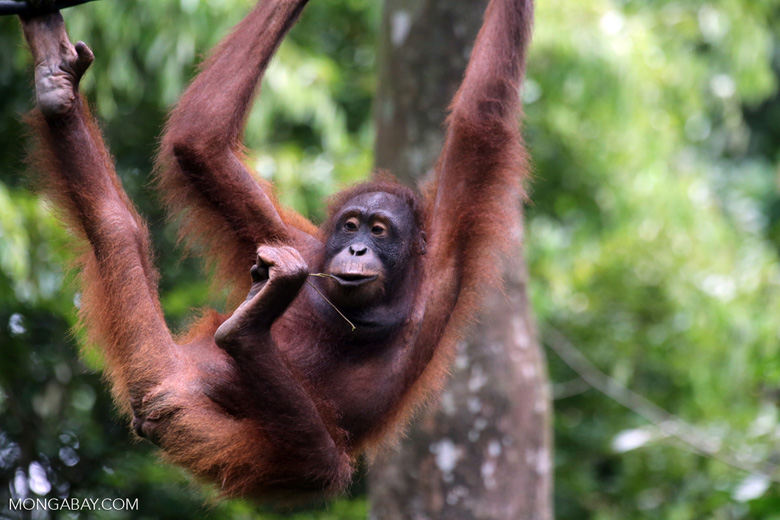An estimated 1,500 orangutans now live in rescue and rehabilitation centers located across Sumatra and Borneo. As habitat loss due to deforestation and forest fires continues, these institutions are struggling to keep up with demand.
Release into the wild is the ultimate, urgent, goal for most of these animals, but a new study warns that there could be serious genetic implications for the offspring of reintroduced animals — and orangutan populations in general — if those rescued from one region are released into a different region.
The study, led by primatologist Graham Banes, examined the genetic consequences when orangutans from different, divergent, subspecies interbreed. Borneo’s three recognized subspecies — from three distinct regions — are thought to have diverged from each other 176,000 years ago, meaning that hybridization between them may result in negative genetic effects. If hybrid offspring reproduce, combinations of genes that were beneficial for one lineage can be disrupted, resulting in poor health and reduced reproductive success, the researcher said. These effects, known as “outbreeding depression,” could threaten the survival of individuals and populations in the long-term.
Read the full article on Mongabay.
 A Bornean orangutan in a rehabilitation center in Sabah. Photo by Rhett A. Butler
A Bornean orangutan in a rehabilitation center in Sabah. Photo by Rhett A. Butler